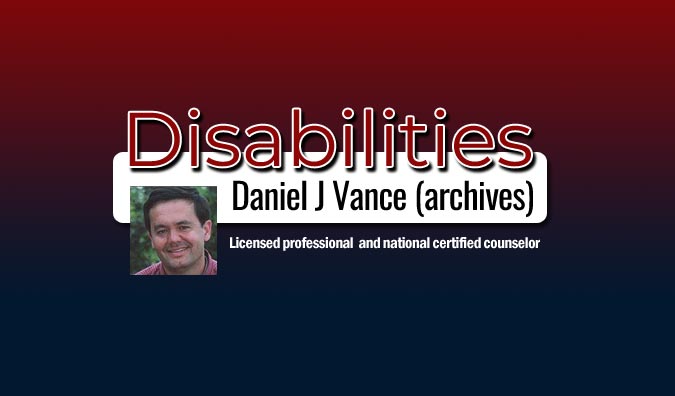For you readers who haven’t been along for the entire ride, I have been penning this weekly newspaper column since September 2002, which makes this September our tenth anniversary. I say “our” because my wife helps make most everything possible. Over the years, she has thought up some interesting column ideas concerning people affected by disability and in some cases created the actual connection, such as with Jim Fletcher, former bass guitarist with Blood Sweat & Tears, whose mother was affected by Alzheimer’s disease.
In general, the news media have a recurring tendency to portray people with disabilities as being superheroes or victims rather than as real people. As for superheroes, you often hear them saying accomplished people with disabilities are “inspirational” or “courageous” when most would prefer being seen as just plain “people” whose accomplishments merited attention because of the accomplishment itself and not because of any disability.
The news media portray people as victims when saying someone “suffers” from a disability or is “confined” to a wheelchair. As for the latter, people using wheelchairs aren’t “confined” to anything. Their wheelchair frees them up to get around. They would be confined if they didn’t have a wheelchair. What’s so hard to understand about that?
Rather than perpetuate superhero and victim stereotypes, I try best I can to write the story from the person with the disability’s perspective and portray that person as a unique individual simply going through a different experience than most. I want column readers to acquire a realistic feel for what different people with disabilities face and I want to break down those stereotypes.
For instance, people with disabilities are no more homogenous as a group than whites, blacks, Hispanics, men, women or Americans. In other words, they are politically conservative and liberal, rich and poor, old and young, atheist and spiritual, content and not-so-content, single and married, and vacationers and non-vacationers. No two are alike. People with disabilities no more speak with a unified voice than Americans as a whole do. Hopefully, you will find that kind of variety reflected here in this column.
The perpetuation of these stereotypes tends to build walls between people with disabilities and others. In my conversations with people with disabilities, I hear it’s sometimes those relational walls built by stereotypes that create more problems for them than the disability itself.
Thanks again for reading.
(21+ years strong)
Welcome to the brighter side!
Get in front of local customers! 24/7 (365)





















